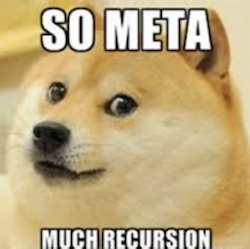You Can Build a Video Game
Video games are the new lively medium
Before you go any further, I would like you to play some pieces of 'ergodic' literature ('ergodic' in that they take work to 'read'):
- Buried, by Tara Copplestone & Luke Botham (blog post|game). This, and the others, might take a moment to load. Be patient.
- Beneath Floes, by Bravemule (info|game)
- Queers in Love at the End of the World, by Anna Anthropy (info|game)
- Depression Quest, by Zoe Quinn (info|game)
How do these pieces achieve their aims? How do you feel as you play them? What - and how - do you learn? What do these games do to you? Each is trying to get you to see the world from a different perspective; all of them feature player characters that you do not see in the main stream. Indeed, I've always felt that in some ways, in AAA titles, the graphics get in the way. Imagine if the computing power of all your processors, all your cores, was devoted to representing human interactions rather than blood, gore, and amazing athletic abilities (for more on this, see Ryan Pickering's undergrad BA thesis work)?
These four pieces are all very different, but each one of them is affecting, moving, and indeed, are art. They were all built using Twine. At its core, Twine allows the construction of branching narratives through hyperlinked pieces of text. (You can even hack Twine to allow your story passages to be triggered by your geographical location! see this). In its simplicity, it harkens back to the origins of video gaming, the Interactive Fiction.
In the early days of video gaming, one way of trying to combat piracy was 'the feelie', an actual physical artefact of some kind upon which progress in the game depended. It might be that you had for instance the grail diary, and a character in the game would demand to know where you'd been on June 25 1936. If you didn't have the physical object, you couldn't answer the question, and the game would shut down.
This is what I want you to do.
The Programming Historian is your 'feelie', your physical object, that you will tie into an immersive, engaging experience. That is to say, you are going to build, using the tools of gaming, a work of digital history that simultaneously explores, comments, critiques, or teaches, digital history.

Start with Twine
I'd suggest you begin with Twine, although there are many other options out there, up to and including augmented reality and virtual reality. I have an Oculus Rift if anybody has the coding chops and can see a way to make that work for what I want you to do.
There are other platforms that can be played with. I could imagine using Omeka and Neatline somehow as a kind of game board with riddles and puzzles, for instance. Perhaps hypothes.is as a kind of Ovid-in-Dante's-Inferno guide. Youtube videos can be annotated with links. There are many possibilities. (Once upon a time there was something called 'PMOG' that held enormous promise. I still think the example is worth considering.)
- Some twine resources:
Anastasia Salter on Twine's audio capabilities
Game mechanics for immersive history
The list below all speak to game design, learning, and historical consciousness. In no particular order or citation style:
Andrew B.R. Elliott and Matthew Wilhelm Kapell "Introduction: To Build a Past that Will “Stand the Test of Time”: Discovering Historical Facts, Assembling Historical Narratives", Playing with the Past online resource
Angela Cox 'Teaching Games as Text (part iv)'' play the past You might want to look at i-iii too.
Rolfe Daus Peterson, Andrew Miller and Sean Joseph Fedorko 'The Same River Twice: Historical Representation and the Value of Exploring Societal Concepts in the Total War, Civilization, and Age of Empires Franchises' Playing with the Past online resource
Emily Bembeneck 'Spatial Storytelling' play the past
Emily Bembeneck 'Changing the Classroom Perspective: Incremental Progression' play the past
Christ Priestman 'A Videogame for Ferguson' The Atlantic August 27 2014
Kevin Kee and Shawn Graham 'Teaching History in an Age of Pervasive Computing: The Case for Games in the High School and Undergraduate Classroom' K. Kee (ed) PastPlay: Teaching and Learning History with Technology
Mir, Rebecca. 'No more chocolate covered broccoli' play the past
Tim Compeau & Rob MacDougall Tecumseh Lies Here: Goals and Challenges for a Pervasive History Game in Progress in K. Kee (ed) PastPlay: Teaching and Learning History with Technology
2009 Kee, Graham, et al. Towards a Theory of Good History Through Gaming. Canadian Historical Review 90.2 (track down citations to that one; reception was mixed)
...indeed, I have a bunch of resources/things I've written on games here which you may or may not find useful.
How - and what - you will submit
You will need to create a repository in github into which you will keep your notes, your research, art work, etc. Make sure to have a Readme.md file in there that indicates the appropriate license or copyright on your materials. Make sure you also have a document in there (bibtex file, or other) for your citations and sources. If you go with a twine project, you can put the playable file into a gh-pages branch and serve it that way; another option might be Philome.la (I once did a syllabus this way). If you go some other route, please keep me abreast of developments and let me know what's going on. You will send me a progress report at the end of Winter Reading week (this can be an email, just telling me what's going on).
You will submit this (or whatever you have) by the second last week of term. Send me the URL. This will give us time to play each other's games, and have one last discussion about what worked and what didn't.